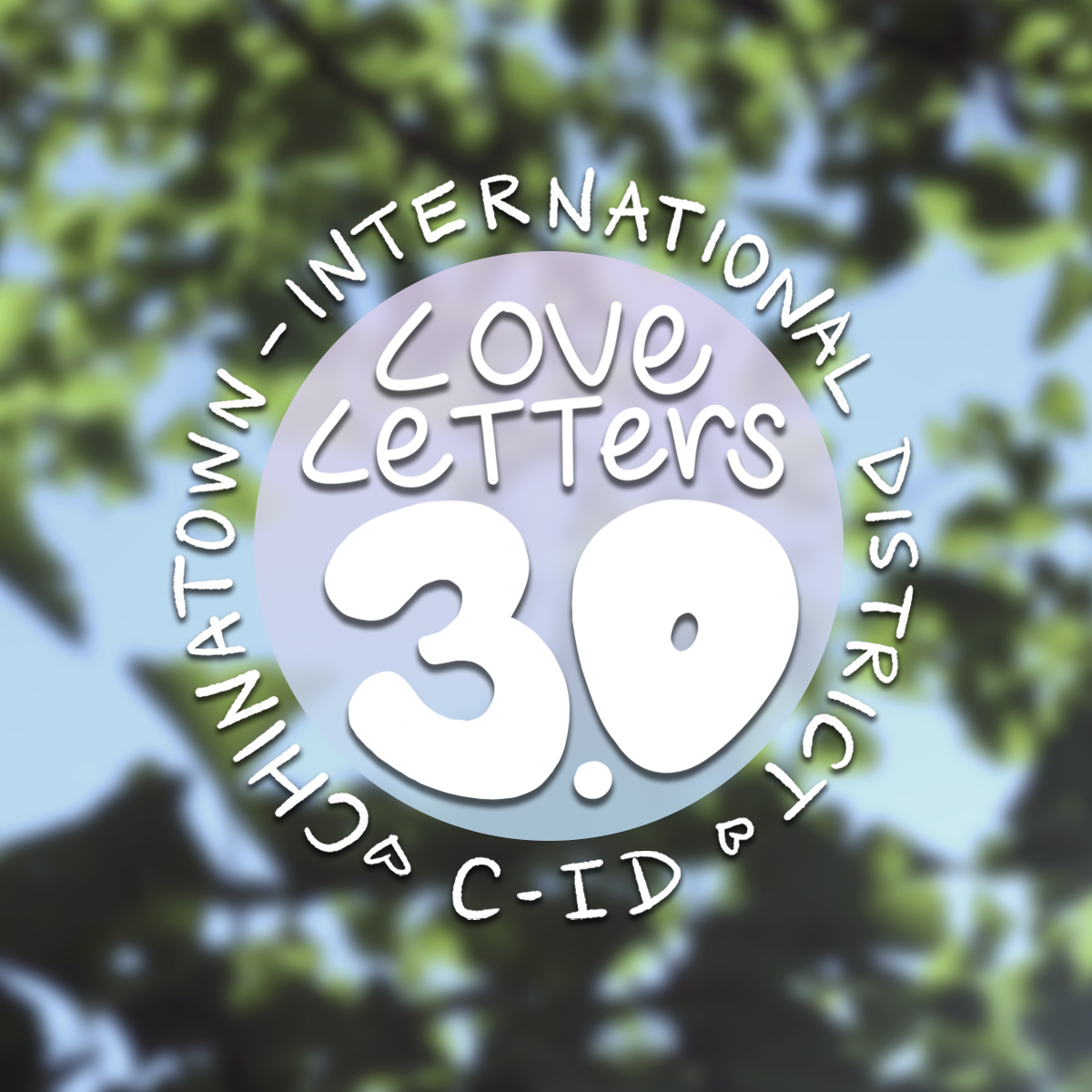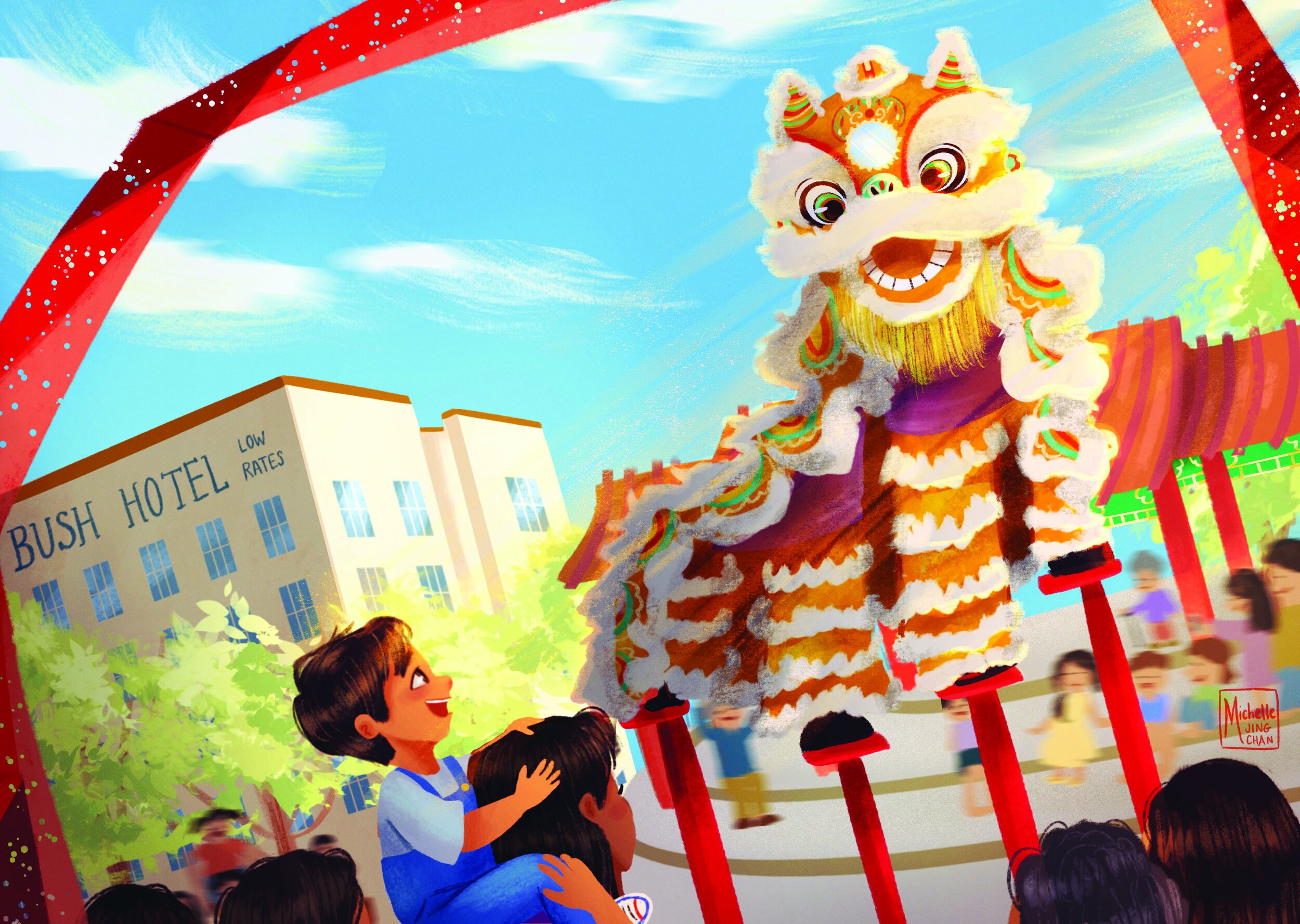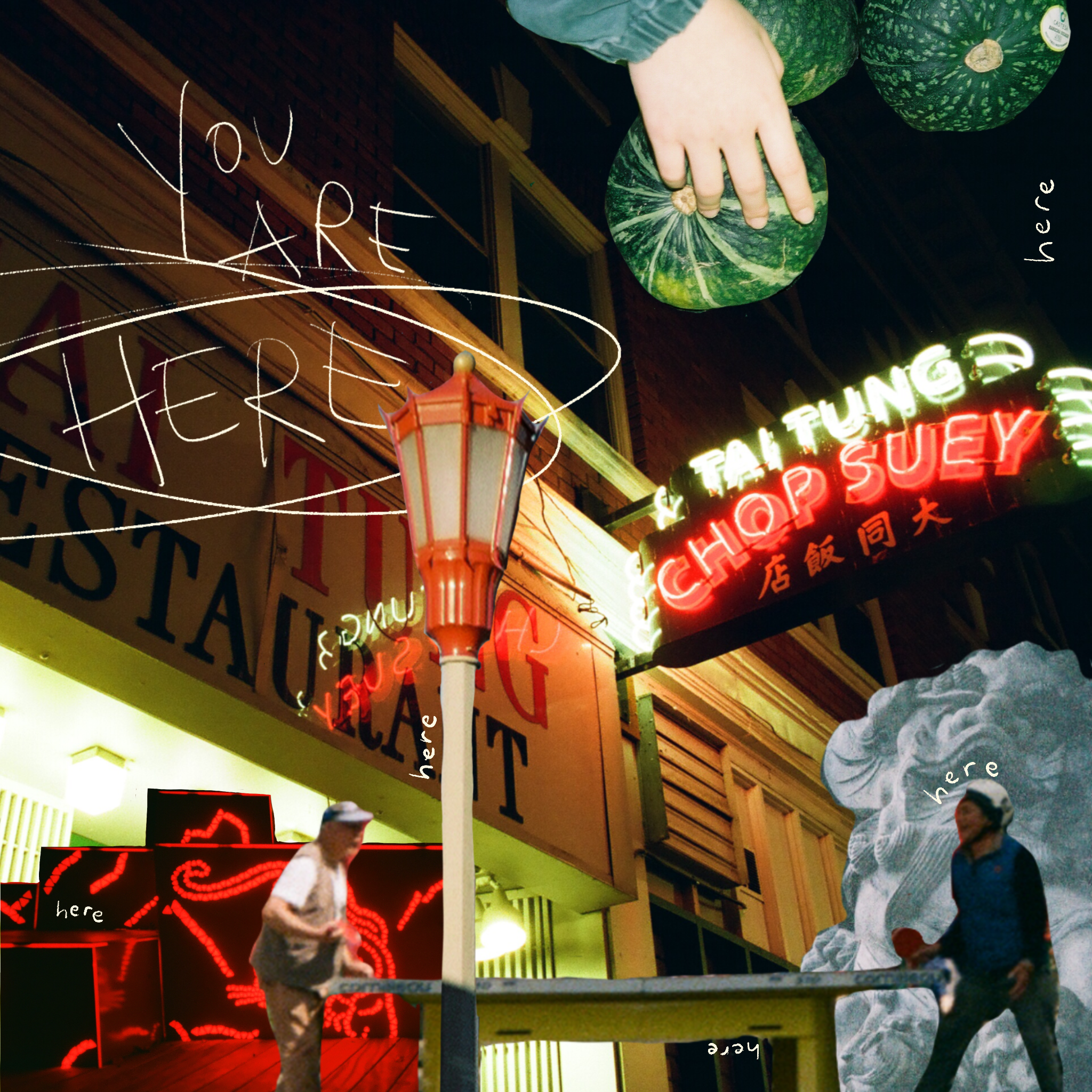
NOW ON VIEW
On view in Historic Canton Alley from September 17, 2022 through January 30, 2023
EXHIBIT
Building off of past Love Letters installations and the Wing On Wo & Co 永安和 original call for Love Letters to Chinatown is CID Love Letters 3.0
These pieces are collected and shared in a physical exhibition in our publicly-accessible gallery space in the Historic Canton Alley. Works will be displayed as digital reproductions.
The COVID-19 global pandemic has not only been a public health crisis, but an economic crisis, and impending mental health crisis as well. The stress and pressure have weighed heavily on our spirits. We crave the role that art plays in our lives as an outlet for processing our emotions, raising our voices, and sharing our personal stories. The work of arts and culture organizations like the Wing Luke Museum, as well as the collectivized work of community -driven artists, add to the strength of our community’s emotional and spiritual resilience. As we struggle with the racism, stigmatization, and economic crisis caused by COVID-19, now, more than ever, our stories and lived experiences as Asian Pacific Americans must be visible, amplified, and not left behind on the road to recovery.
Anti-Asian hate has been rampant since the beginning of the pandemic. Asian American, Native Hawaiian and Pacific Islander (AANHPI) voices have been silenced and hurt due to the stigmatization of COVID-19 and Asian Pacific Americans. We hope that with the continuation of our Love Letters campaign, we are able to create a platform for healing and finding solace to empower the AANHPI community to find resilience and healing through art practices.
ARTIST STATEMENTS
“YOU ARE GOLDEN”, MICHELLE JING CHAN
ARTIST STATEMENT
This illustration was inspired by the belated 2022 Lunar New Year celebration in Hing Hay Park, which is one of my favorite places in Seattle Chinatown-International District. After two long years of the pandemic, watching the performances was such a joyful experience. In the face of anti-Asian racism, these gatherings are a reminder that celebration is an act of resilience and show that we will not be intimidated.
The existence of places like Hing Hay Park enables these celebrations and allows our community to unite together. I hope that Hing Hay Park will continue to remain a staple of the C-ID and host other joyful celebrations for many years to come.
“WELCOME TO STAY”, EMMY ZHANG
ARTIST STATEMENT
“Welcome To Stay” is a three-panel representation of what Seattle’s Chinatown-International District means to me.
The maneki neko (‘beckoning cat') signifies the welcoming spirit of Hing Hay Park and other community spaces in the neighborhood. The Japanese word for frog, kaeru, is a homonym for “to return”, so the frog represents the restaurants and businesses I frequent, such as Jade Garden. And lastly, the pigeon is a symbol of perseverance and returning home. Much like how pigeons helped us send messages in the past, the Wing Luke Museum is a messenger for the community, bringing awareness to AAPI causes through education, community involvement, and celebrations. Through the [Wing Luke Museum], I’ve learned so much about the history of Chinatown-ID, which is another piece of American history that is often overlooked. I am inspired by the neighborhoods’ stories of resilience and the spirit of diversity. In a thriving community, everyone is welcomed to stay.
“DANNY WOO GARDEN”, MIYA SUKUNE
ARTIST STATEMENT
Founded in 1975, the Danny Woo Garden contains almost 100 garden plots tended by Asian elders who reside in the Chinatown-International District. When I walk through the garden in the summer, it is busy in the late afternoon as people harvest fresh vegetables. I feel connected to my own mother, who lives far away but is busy with her pots and tubs of vegetables, watching her shiso, eggplants, and tomatoes grow. The activity and camaraderie here make the Danny Woo Garden an essential green space for this neighborhood and its residents.
“WE ARE OPEN”, YOONA LEE
ARTIST STATEMENT
As a Korean American cross-disciplinary artist and writer, I produce work that is informed by my experiences as both a woman of color and an anti-racist activist. Because race in America is a heavily freighted subject, I use different approaches, including portraiture, abstraction, conceptual collage, and personal narrative, to explore its visceral and theoretical aspects. My work addresses the traumatizing impact of systemic racism, histories of oppression, and hybridized identity. Through portraiture, I seek to uplift and center historically marginalized groups, including AANHPI, Black, Indigenous, and Latinx communities. I use self-portraiture exercises to teach antiracist strategies and investigate cultural identity in educational venues. I have also begun to honor my own ancestral lineage, including five generations of Korean freedom fighters, through my figurative work. Now more than ever, I realize that art and writing carry enormous activistic potential. Using these tools, I hope to help change the cultural conversation and facilitate healing, both of which are critical to radical social transformation and, ultimately, collective liberation. I hope this latest set of watercolors conveys my deep and tender love for the CID and inspires others to feel it too, enough to fight gentrification and displacement in the community.
“WISHING YOU GOOD FORTUNE AND GOOD FOOD”, NICOLE WOON
ARTIST STATEMENT
These gachapon-inspired vending machines are a tribute to the plethora of food options available in the Chinatown-International District, the spontaneity of deciding what to order, and the neighborhood’s global influence. Food is the way my family connects and the first thing on our minds when we visit the C-ID. We’ll initially make a beeline for Jade Garden before the crowds arrive. Over the clink of tea cups and clatter of chopsticks, I speak Chinese using the only vocabulary I know: “One order of har gow, two orders of siu mai.” We stroll up the block to Harbor City, pressing our noses to the window as we choose which barbecue meats to take home. We settle on a plump roast duck with crisp skin and a glistening slab of char siu. We turn the corner to peruse the display case at Cake House, where I select a pillowy paper-wrapped sponge cake for the road.
The C-ID’s restaurants satiate my hunger in the present, but also are the flavors of my past. Growing up, we’d frequently drive to LA’s Chinatown or Monterey Park to meet relatives for lunch. These gatherings brought generations of my family together over good food and lively conversation. They also represent how my elders were able to achieve the American Dream, whether they worked in restaurants themselves or became successful enough to take the whole family out for a meal. These food-focused outings will remain future traditions as I introduce new loved ones to the places I cherish.
“YOU ARE HERE”, CARA NGUYEN
ARTIST STATEMENT
I met the late Kerry Taniguchi (also known as Grandpa Kerry, Gramps, and the Ancient Relic) in the Wing Luke Museum gift shop in the fall of 2019.
If you were to scroll through my text message history with him, you’d find the following: pictures of us together, pictures from my walks, texts from him asking me to call him back, and texts from me apologizing for missing his call and that I’d call him back soon. But mostly, we used to text each other haikus.
When I miss him, I try to remember to write him haikus. I write them in my notebook, I say them on my walks, I send them up, and out, and I know that he gets them. It was our little ritual, and though he's not technically here anymore, I know he still sends them to me.
When I walk under the streetlights guiding my way home, when I eat dim sum at the park, when I see an elder walk slowly across the street, hands folded behind their back.— all around me, I hear haikus, and I know he's still here. YOU ARE HERE (and here, and here, and here, and here) repeats in my mind as I walk through the neighborhood, into Tai Tung where we used to eat (no veggies, please), at Hing Hay Park where we would sit side by side, at Danny Woo Garden overlooking the city. Little haikus, everywhere, reminding me that he’s still here, will always be.

SPONSORS
LEAD PROGRAM SPONSOR
PRIME SPONSOR
MAJOR SPONSORS
MUFG UNION BANK
WELLS FARGO









